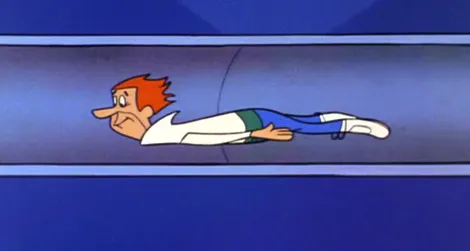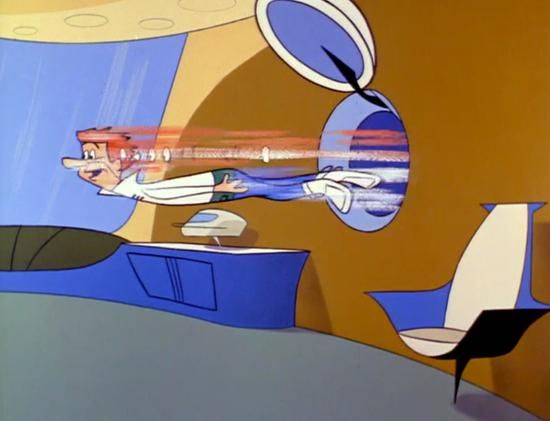George Jetson Navigates a Series of Tubes
Travel by pneumatic tubes? The idea was seriously considered in the 1960s
/https://tf-cmsv2-smithsonianmag-media.s3.amazonaws.com/filer/07/c5/07c5eb8f-6b23-444e-b839-8a6b7a60327c/jetsons-spacely-pneumatic-tube.jpeg)
This is the 20th in a 24-part series looking at every episode of “The Jetsons” TV show from the original 1962-63 season.
“We may take it for granted that every well-equipped business office will be in direct communication, by means of large-calibred pneumatic tubes, with the nearest post-office. And however rapidly and however frequently the trains or airships of the period may travel, the process of making up van loads of mail matter for despatch to remote centres, and redistribution there, is far too clumsy for what commerce will demand a hundred years hence. No doubt the soil of every civilised country will be permeated by vast networks of pneumatic tubes: and all letters and parcels will be thus distributed at a speed hardly credible to-day.”
-T. Baron Russell, A Hundred Years Hence: The Expectations of an Optimist (1905)

In the 20th episode of “The Jetsons” viewers are treated to a diverse mix of the most Jetsonian of technological wonders. The episode, titled “Miss Solar System,” first aired on February 10, 1963 ,and featured a little bit of everything: videophones, 3D-TV, autonomous cleaning robots, moving sidewalks and pneumatic tubes. But unlike the vertical-lift pneumatic tubes we’ve seen in almost every episode of the series thus far, this episode shows a horizontal pneumatic tube system with multiple points of entry and exit.
In the late 19th century pneumatic tubes were starting to be widely used in department stores, banks and stock exchanges, where small packages and notes could be sent over relatively short distances at a rapid pace. This development was reflected in the futurist fiction of the time, like Edward Bellamy’s influential 1888 novel Looking Backward.
The technology even evolved to sometimes include home mail service and on a much larger scale, pneumatic train transportation. But needless to say, unlike the world of “The Jetsons,” the pneumatic tube doesn’t work so well in the real world as a transportation device for a human unprotected from the dangers of the tube itself.
In the Jetsons universe, the pneumatic tube is a high-speed substitute for the elevator, where stepping into the tube instantly transports someone to another floor. But on occasion the movement is lateral, like in the sequence below.
Like virtually every technology we see in The Jetsons, this futuristic idea had origins elsewhere. By the early 1960s, some organizations were touting this idea of sending people through pneumatic tubes. In 1960, the American Petroleum Institute gazed into its crystal ball and made some predictions on “Petroleum’s 2nd Century.” From the February 7, 1960 Hammond Times in Indiana: “The cited, as a long-range possibility, the movement of such diverse items as turpentine, fruit juices and milk through pipelines the way petroleum travels today. Even people might be transported the way sales slips and payments are delivered by pneumatic tube in department stores.”
Of course, this human projectile pneumatic tube system has yet to become a reality here in the 21st century.

This episode may be the most Jetsonian of the entire series: while it’s ostensibly about the relationship between Jane and George — the give and take of marriage and how we treat family — each of the dozen or so technologies that viewers are promised are sprinkled about; the future tech masquerading as scenery while they’re in fact the star of the show.
/https://tf-cmsv2-smithsonianmag-media.s3.amazonaws.com/accounts/headshot/matt-novak-240.jpg)


/https://tf-cmsv2-smithsonianmag-media.s3.amazonaws.com/accounts/headshot/matt-novak-240.jpg)